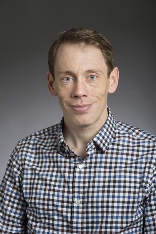
Shawn Litster
Professor, Mechanical Engineering
Bio
Ph.D., Stanford University, 2008
M.A.Sc., University of Victoria, 2005
B.Eng., University of Victoria, 2004
LinkedIn Page for Prof. Litster
Google Scholar Page for Prof. Litster
X-ray Computed Tomography Facility Website
Professor Litster’s research focuses on sustainable energy conversion technologies that leverage nano- and micro-scale transport phenomena for enhanced performance and new functionality. He is particularly interested in research that combines electrochemistry and electrokinetics with the mechanical engineering fundamentals of fluid mechanics, heat and mass transfer, and design. Hydrogen fuel cell technology is poised to become an important bridge between sustainable energy resources and end-user services (i.e. transportation). Litster’s research addresses technical obstacles to wide-spread adoption of fuel cells, such as effectively utilizing the costly platinum catalyst used in the electrodes. Unique capabilities in his group include microstructured electrode scaffold diagnostics, which have enabled the first through-plane potential measurements through the thickness of operating fuel cell and aqueous battery electrodes. These measurements assist researchers in pinpointing the loss the mechanisms that reduce energy conversion efficiency as well as assist in elucidating fundamental phenomena. These experimental methods are combined with advanced computational models of the micro-/nano-scale phenomena to identify directions for future material and device development.
Professor Litster is also the PI for CMU’s nano-scale resolution X-ray computed tomography (nano-CT) facility, which is a unique user facility for visualizing the 3D internal structure of materials down to 50 nm resolution. X-ray nano-CT is a non-destructive method of obtaining high resolution 3D images of the complex, internal structure of materials and devices. The high resolution of 50 nm (16 nm voxels) is achieved using advanced X-ray optics, including a single capillary condenser and a Fresnel zone plate objective. With the use of the Zernike phase contrast mode, this system can achieve its high resolution even on materials with low atomic numbers; i.e. materials with low absorption contrast, such as organic materials and polymers. As a non-destructive method that operates with ambient and controlled sample environments, nano-CT opens the door for new 4D imaging approaches for capturing the temporal evolution of a material’s 3D microstructure under applied stresses and chemical environments.
In his spare time, Prof. Litster is a competitive cyclist competing at the national elite level: